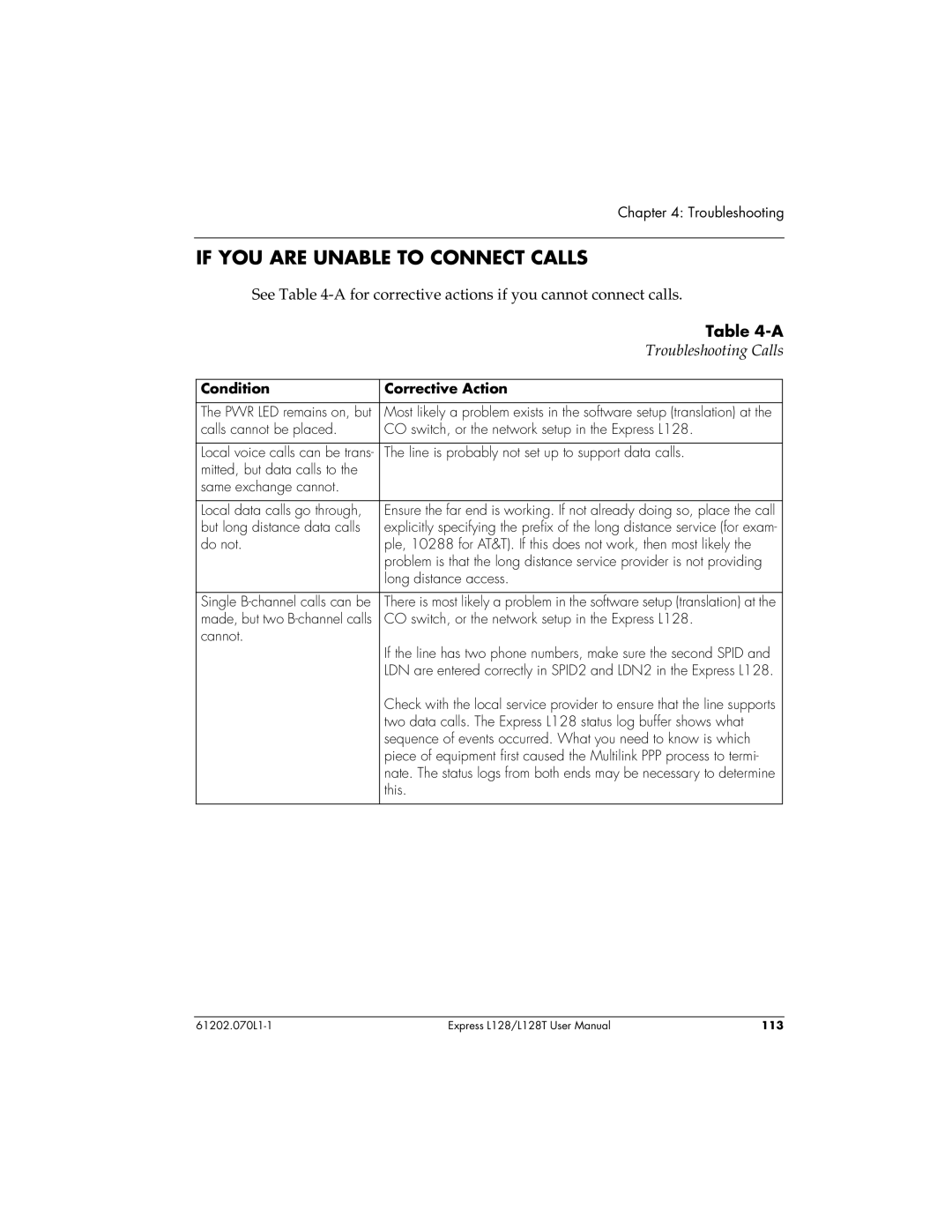
Chapter 4: Troubleshooting
IF YOU ARE UNABLE TO CONNECT CALLS
See Table
| Table | |
| Troubleshooting Calls | |
|
|
|
Condition | Corrective Action |
|
|
|
|
The PWR LED remains on, but | Most likely a problem exists in the software setup (translation) at the |
|
calls cannot be placed. | CO switch, or the network setup in the Express L128. |
|
|
|
|
Local voice calls can be trans- | The line is probably not set up to support data calls. |
|
mitted, but data calls to the |
|
|
same exchange cannot. |
|
|
|
|
|
Local data calls go through, | Ensure the far end is working. If not already doing so, place the call |
|
but long distance data calls | explicitly specifying the prefix of the long distance service (for exam- |
|
do not. | ple, 10288 for AT&T). If this does not work, then most likely the |
|
| problem is that the long distance service provider is not providing |
|
| long distance access. |
|
|
|
|
Single | There is most likely a problem in the software setup (translation) at the |
|
made, but two | CO switch, or the network setup in the Express L128. |
|
cannot. | If the line has two phone numbers, make sure the second SPID and |
|
|
| |
| LDN are entered correctly in SPID2 and LDN2 in the Express L128. |
|
| Check with the local service provider to ensure that the line supports |
|
| two data calls. The Express L128 status log buffer shows what |
|
| sequence of events occurred. What you need to know is which |
|
| piece of equipment first caused the Multilink PPP process to termi- |
|
| nate. The status logs from both ends may be necessary to determine |
|
| this. |
|
|
|
|
Express L128/L128T User Manual | 113 |
